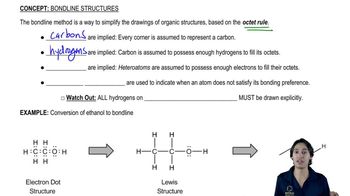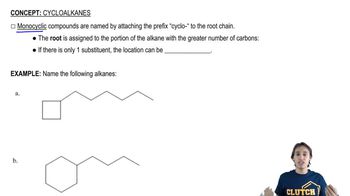Draw the structure and give the molecular formula for each of the following compounds.
c. cyclopropylcyclopentane
d. 3-ethyl-1,1-dimethylcyclohexane
 Verified step by step guidance
Verified step by step guidance Verified video answer for a similar problem:
Verified video answer for a similar problem:



 1:11m
1:11mMaster How to find the root name for cycloalkanes with a bite sized video explanation from Johnny
Start learning